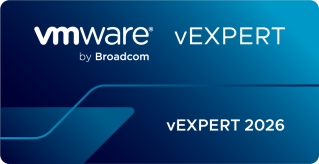Excellent advice from Corey Romero for anyone considering the vExpert 2026 application.
You don’t need a full year of contributions—just meaningful, recent impact.
This “Q4 Sprint” approach is a must-read for anyone ready to step up their community involvement and recognition in the VMware ecosystem.
📘 Read the full post here:

It’s never too late to become a vExpert! Here are the things you can start doing to join the exclusive club of giving back to the community. If you’re looking at the calendar and thinking ‘I didn’t do enough this year,’ you might feel it’s too late to start contributing to the community. It’s […]
Broadcom Social Media Advocacy









